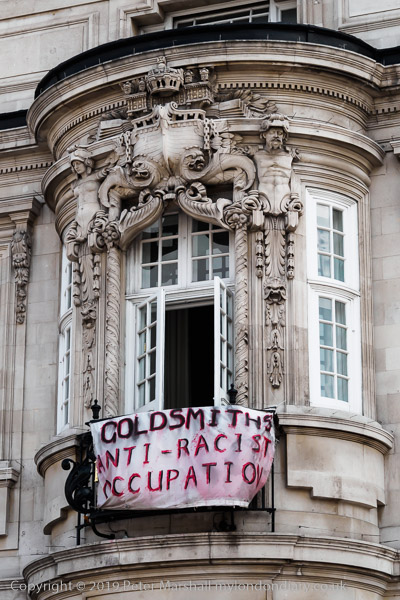
Goldsmiths, University of London was once a small college in New Cross, establishe in 1891 by the Worshipful Company of Goldsmiths as Goldsmiths’ Technical and Recreative Institute in a building built in 1844 for the Royal Naval School who had outgrown the site. It became a college of the University of London in 1904 as as Goldsmiths’ College, losing the apostrophe in 1933.
Goldsmiths College is still its official name, but it no longer uses the ‘College’, perhaps too much of a reminder of its past role largely in training teachers, although also offering other courses. Many well-known British artists studied there, perhaps benefitting greatly from a thriving south London art scene in the 1970s in Bermondsey and other areas of nearby Southwark.
Goldsmiths too has outgrown its old building, although it is still its main building, but has spread its campus across a much larger area, with both new buildings and incorporating older ones, the most prestigious and ornate of which is the former Deptford Town Hall on the New Cross Road.
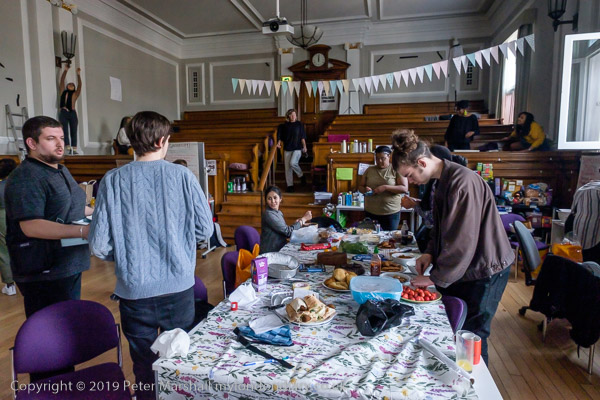
Over half the students at Goldsmiths are mature students, and around a fifth are overseas students as well as many BAME students from this country. That mix was evident when I visited Deptford Town Hall where students were preparing for a party to celebrate 50 days of occupation in the building – as it has also been on other visits to the campus. It feels more like a London university than most.
The Goldsmiths occupation was prompted after a candidate standing in student elections was racially abused and the university authorities failed to take action, but has longer and deeper causes. Students claim that the university fails to treat its BAME students and workers fairly, with higher dropout rates for them as well as lower academic results. I’d been at Goldsmiths a couple of months earlier, on St Valentines Day for a protest to launch the campaign by the IWGB union and students to directly employ its security officers and give them decent pay and conditions.
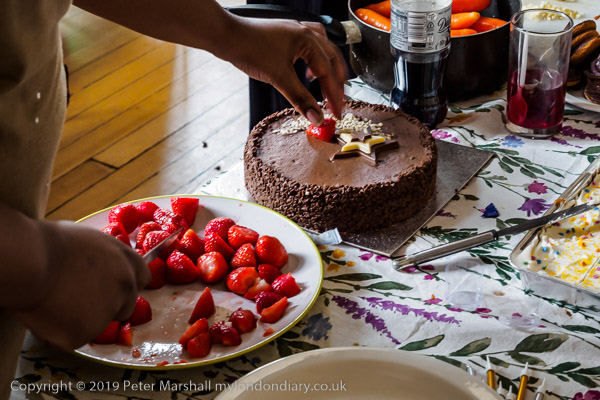
I was signed into the building by a student and given a conducted tour of the occupied areas, then watched and photographed the occupying students preparing for their party – and wished I could stay as the food looked delicious.
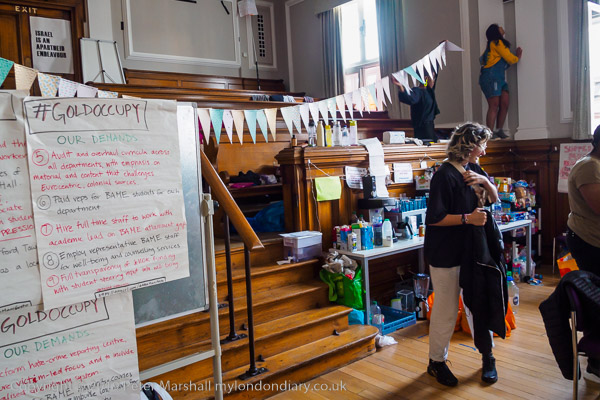
The students had a long list of demands, including that Goldsmiths develop a strategic plan to tackle the institutional racism – and bring workers on the campus into direct employment, several versions of which were written up in the occupation and on-line.
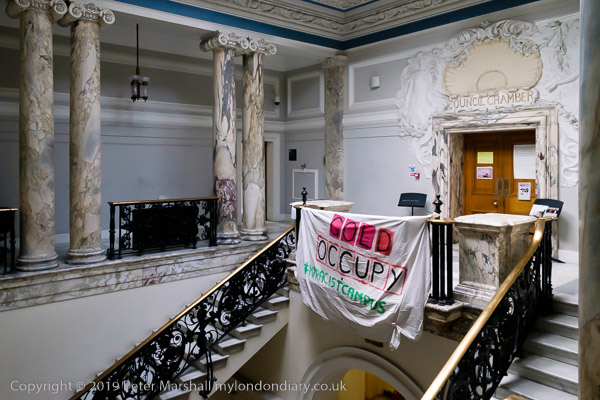
They also demand that Deptford Town Hall be made more available to the local community, as they say Goldsmiths have failed to live up to the promises they made about this. It really is a splendid building, and the interior even more so than the impressive facade, and it would be good to see it become a community asset rather than solely used for university purposes. It was after all built for the people, doubtless with money from taxpayers as well as from our exploitation of the Empire.
The occupation finally came to a successful end in July after 137 days when the Black, Minority Ethnic, Muslim, LGBTQ and disabled student-led occupation by Goldsmiths Anti-Racist Action obtained a legally binding dcument signed by the Senior Management Team to their demands including that they would not pursue further legal action against those who had carried out the occupation.
More pictures from my brief visit: 50 days anti-racist occupation at Goldsmiths.
All photographs on this and my other sites, unless otherwise stated, are taken by and copyright of Peter Marshall, and are available for reproduction or can be bought as prints.
There are no adverts on this site and it receives no sponsorship, and I like to keep it that way. But it does take a considerable amount of my time and thought, and if you enjoy reading it, please share on social media.
And small donations via Paypal – perhaps the cost of a beer – would be appreciated.